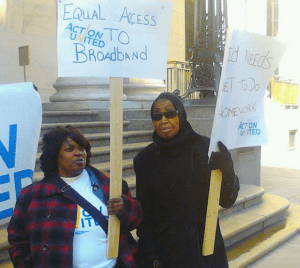Now that the cable industry’s “TV Everywhere” online video platform has been established, some programmers are discovering they can become lucrative revenue streams as well as a deterrent to cable cord-cutting.
Time Warner (no relationship to Time Warner Cable) and CBS have decided giving away live sports programming for free is unacceptable and will now charge for online viewing of certain March Madness basketball games.
Since 2006, the basketball tournament, which may include hoops from https://www.megaslam.com.au/adjustable-basketball-hoops/, has been available for free online viewing, but starting March 7, viewers will need to pay $3.99 for full access to all 67 games [and basic cable viewers will need to verify] they are current cable, satellite, or telco TV subscribers. [See clarification below.]
Online viewing of games televised on CBS will be available for free, but the new paywall will block free access to selected games shown on cable networks TNT, TBS, and TruTV in certain cases.
Time Warner CEO Jeff Bewkes sees charging for online viewing as a substantial new revenue stream.
Monetizing online viewing is a high priority for programmers, even though much of the programming will continue to carry commercial advertising. Last year, an estimated 2.6 million daily visitors watched March Madness online. At $3.99 each, that would net the two companies nearly $10.4 million dollars.
In a separate announcement, Comcast says it will launch a new Netflix-like on-demand streaming service tomorrow for its cable subscribers.
Streampix (free for triple play customers, $4.99/mo for others) will offer on-demand movies and TV series licensed from NBC-Universal, Warner Bros., Sony Pictures, and Disney.
Selected content can be watched while on the go, but a substantial amount of what Streampix is expected to offer is already available through services like Hulu.
Streampix is designed to appeal to customers who currently pay $7-8 a month for Netflix or Hulu+.
The move establishes Comcast’s own “paywall” for a deeper catalog of online video content, supplementing programming it gives away at no charge to “authenticated” cable subscribers.
Comcast will not sell Streampix to non-Comcast customers.
[flv width=”640″ height=”380″]http://www.phillipdampier.com/video/Bloomberg Comcast Streampix 2-21-12.flv[/flv]
Bloomberg reports Comcast’s Streampix service is unlikely to pose a major challenge to services like Netflix. (4 minutes)
Clarification: A reader suggested we better clarify the viewing options. It gets complicated depending on what kind of video/broadband subscription you have, where you want to watch, and what kind of feed you want:
CBS-televised games: Available for free with no restrictions from CBS website.
Basic Cable games: If you want to watch outside of the home, on certain portable devices, or do not have a combined broadband/cable-TV subscription, you will need to purchase a subscription for $3.99 from the NCAA. Free streaming is only available to authenticated cable/broadband subscribers watching from their home broadband account on devices pre-approved by your pay television provider.
Open/Full Access: If you want full, unrestricted access you need to pay for the NCAA ® March Madness ® Live™ app ($3.99). Since this app provides the NCAA’s own video and audio feeds, you don’t need a cable subscription.


 Subscribe
Subscribe






 The group, which says it has 44,000 members in Philadelphia, Pittsburgh, Harrisburg and Allentown, says it could find only two families among its members that actually qualified to sign up for the service. Some were disqualified because they didn’t participate in the school lunch program, others because they already have Internet service or had a long-forgotten past due bill.
The group, which says it has 44,000 members in Philadelphia, Pittsburgh, Harrisburg and Allentown, says it could find only two families among its members that actually qualified to sign up for the service. Some were disqualified because they didn’t participate in the school lunch program, others because they already have Internet service or had a long-forgotten past due bill.
